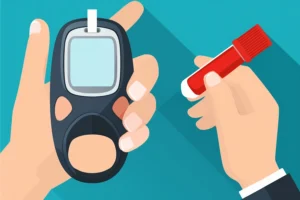Hiccups are sudden, involuntary contractions of the diaphragm and intercostal muscles, followed by a quick closure of the vocal cords, producing the characteristic “hic” sound. While they are usually harmless and temporary, lasting only a few minutes, persistent or chronic hiccups can be a source of discomfort and may require medical attention. Most cases resolve on their own, but in rare instances, they can become a more serious and debilitating condition.
In this article, we delve into the science of hiccups, exploring their causes, triggers and potential non-pharmacological treatments.
Understanding the science behind hiccups, along with effective management strategies, is essential for both those who experience them occasionally and those dealing with more persistent cases. By providing comprehensive insights, this article aims to enhance awareness and offer practical guidance on managing hiccups.
What are Hiccups?
Hiccups, also referred to as “Singultus”, derive their name from the Latin word Singult, meaning “sob” or “gasp,” which describes the sound made by the involuntary muscle contractions followed by the sudden closure of the glottis.1
Hiccups are triggered by a sudden, involuntary contraction of the diaphragm and intercostal muscles.1 This contraction is immediately followed by the closure of the glottis, which blocks the flow of air into the lungs. The rapid intake of air and its subsequent blockage by the closed glottis leads to the characteristic “hic” sound.2
While they often occur without any identifiable cause, hiccups are generally harmless and self-limiting, typically resolving quickly in healthy individuals.
Duration and Classification:
Hiccups can be categorized based on their duration:3
1. Transient or Self-limited: In most cases, hiccups last only for a few minutes and resolve without any intervention.
2. Persistent: If the hiccups continue for more than 48 hours, they are considered persistent and may require medical attention.
3. Intractable: Hiccups that persist for more than two months are known as intractable and can be debilitating, necessitating professional intervention.
Hiccup Reflex Arc
The hiccup reflex is a complex physiological process involving three key components:2
1.Afferent Limb: This part includes the phrenic nerve, vagus nerve and thoracic sympathetic fibers, which carry sensory signals to the brain.
2.Central Processing Unit: The midbrain processes these sensory signals, although a specific hiccup control center has not been identified.
3.Efferent Limb: The motor signals are primarily carried by the phrenic nerve, which stimulates the diaphragm and intercostal muscles, leading to their contraction.
When this reflex arc is activated due to irritation or stimulation, the diaphragm contracts suddenly and the glottis (the space between the vocal cords) closes, causing the “hic” sound.
Triggers and Causes of Hiccups
Hiccups can be caused by various factors that affect the afferent, central or efferent components of the hiccup reflex arc. These triggers may be related to irritation, overstimulation or disturbances in the reflex pathway.
1. Most Common Benign Triggers:
a) Gastrointestinal Triggers:
◦ Large meals or consumption of carbonated drinks can cause stomach distension, which irritates the reflex arc.
◦ Hot and spicy foods, which may irritate the gastrointestinal tract, are also frequent culprits.
b) Substances and Habits:
Alcohol consumption and smoking may irritate both the gastrointestinal and pulmonary tracts, triggering the hiccup reflex.
c) Psychological Triggers:
Over-excitement, anxiety or stress can sometimes lead to hiccups, particularly when accompanied by hyperventilation or aerophagia (air swallowing). These triggers generally result in short-lived, benign hiccup episodes that are often resolved without any intervention.4
2. Causes of Persistent Hiccups:
Persistent hiccups may arise from a variety of underlying conditions that affect different components of the hiccup reflex arc, including central nervous system disorders, gastrointestinal issues, thoracic conditions and more. Here is a breakdown of the potential causes:2
a) Central Nervous System Disorders:
◦ Vascular Issues: Ischaemic or haemorrhagic stroke, Arteriovenous (AV) malformations, Temporal arteritis.
◦ Infections: Encephalitis, Brain abscess, Meningitis, Neurosyphilis, Subphrenic abscess.
◦ Structural Issues: Head trauma, Intracranial neoplasms (brain tumors), Brainstem neoplasms, Multiple sclerosis, Syringomyelia (fluid-filled cysts in the spinal cord), Hydrocephalus (excess fluid in the brain).
b) Vagus and Phrenic Nerve Irritation:
Goitre (enlarged thyroid gland), Pharyngitis and laryngitis (inflammation of the throat and larynx), Neck cysts or tumors, Hair or foreign-body irritation of the tympanic membrane (eardrum).
c) Gastrointestinal Disorders:
Aerophagia (swallowing air), Oesophageal distention (enlargement of the esophagus), Oesophagitis (inflammation of the esophagus), Gastritis and peptic ulcer disease, Gastric distention (stomach bloating), Gallbladder disease, Inflammatory bowel disease, Bowel obstruction, Pancreatitis and pancreatic cancer, Gastric carcinoma (stomach cancer), Abdominal abscesses, Hepatitis.
d) Thoracic Disorders:
Bronchitis, asthma, Pleuritis (inflammation of the lining of the lungs), Mediastinitis (inflammation of the chest cavity), Aortic aneurysm, Pneumonia and empyema (pus in the chest cavity), Chest trauma, Mediastinal tumor, Enlarged lymph nodes due to infection or neoplasm (cancer), Pulmonary embolism
e) Cardiovascular Disorders:
Myocardial infarction (heart attack), Pericarditis (inflammation of the heart’s lining)
f) Toxic-Metabolic Causes:
Diabetes mellitus, Herpes zoster (shingles), Alcohol consumption, Influenza, Malaria, Tuberculosis, Uraemia (high urea levels in the blood), Hypocalcaemia (low calcium levels), Hypocapnia (low carbon dioxide levels, Hyponatraemia (low sodium levels)
g) Postoperative Causes:
General anaesthesia, Intubation (stimulation of the glottis), Traction on viscera (stretching of abdominal organs), Neck extension (stretching phrenic nerve roots), Gastric distention
h) Drug-Induced Causes:5
◦ Steroids: Dexamethasone, methylprednisolone, oxandrolone, progesterone
◦ Benzodiazepines: Midazolam, lormetazepam, lorazepam
◦ Barbiturates: Methohexital
◦ Antibiotics: Azithromycin
◦ Phenothiazines: Perphenazine
◦ Opioids: Hydrocodone
◦ Alcohol
◦ Chemotherapeutic agents: Carboplatin
i) Psychogenic Causes:
Stress, Excitement, Schizophrenia, Anorexia nervosa, Malingering (faking illness), Conversion reaction.
Persistent hiccups can significantly disrupt essential daily activities, including eating, drinking, sleeping, talking, and even thinking. These interruptions may lead to increased fatigue and heightened stress, especially in individuals who are already unwell. For patients battling underlying medical conditions, persistent hiccups can further exacerbate discomfort, reduce energy levels, and negatively impact their overall recovery and quality of life.6
Prevention and Lifestyle Management of Hiccups
While hiccups are often benign and self-limited, adopting certain preventive measures and lifestyle changes may help reduce their occurrence or alleviate persistent episodes. Here are some strategies:
1. Prevention:
a) Avoid Triggers:
◦ Large meals: Eating large meals may lead to stomach distension, which can trigger hiccups. Opt for smaller, more frequent meals.
◦ Carbonated drinks: Carbonation can cause bloating and pressure on the diaphragm, leading to hiccups.
◦ Spicy foods: These can irritate the gastrointestinal tract, potentially triggering hiccups.
◦ Alcohol: Alcohol can irritate the digestive system and affect the diaphragm, leading to hiccups.
◦ Hot or cold foods: Sudden temperature changes in food or drinks can sometimes trigger hiccups.
b) Mindful Eating Habits:
◦ Eat slowly to avoid swallowing excess air, which can lead to hiccups.
◦ Avoid talking while eating to minimize air swallowing.
◦ Chew food thoroughly to aid digestion and reduce gastrointestinal irritation.
2. Lifestyle Management:
a) Relaxation Techniques:
◦ Breathing exercises: Slow, deep breathing can help relax the diaphragm and prevent spasms that lead to hiccups.
◦ Meditation or mindfulness: Reducing stress and anxiety through relaxation techniques can help minimize the risk of psychogenic triggers.
b) Hydration:
◦ Drink water slowly and in small sips to avoid triggering hiccups. Some people find that drinking a glass of water quickly can help stop a bout of hiccups.
c) Avoid Smoking and Excessive Caffeine:
◦ Smoking and high caffeine intake can irritate the gastrointestinal tract and increase the likelihood of hiccups.
d) Regular Physical Activity:
◦ Mild, consistent exercise can improve overall gastrointestinal health, which may reduce the frequency of hiccups
Potential Complications of Severe and Prolonged Hiccups
Severe and prolonged hiccups can have serious consequences, particularly when they persist for days, weeks or even months without resolution. In such cases, the constant, involuntary contractions of the diaphragm can lead to physical exhaustion and fatigue due to the repeated strain on the muscles involved in breathing. Additionally, since hiccups can interfere with normal eating and drinking, prolonged episodes may result in malnutrition, weight loss and dehydration, further weakening the body.3
In extreme cases, persistent hiccups may cause significant stress on already vulnerable patients, such as those with critical illnesses, leading to severe health deterioration. When left untreated, prolonged hiccups can sometimes contribute to life-threatening complications, such as electrolyte imbalances or exacerbation of existing medical conditions. Although death from hiccups is rare, it can occur in extreme cases where the underlying cause remains unidentified or unmanaged, making timely medical evaluation crucial for persistent or intractable hiccups.
When to Seek Medical Attention
Hiccups that last longer than 48 hours or are associated with other concerning symptoms (e.g., difficulty breathing, severe chest pain or neurologic changes) should prompt medical evaluation. Persistent hiccups may indicate an underlying medical issue requiring treatment.
Conclusion
Hiccups, though often harmless and short-lived, can become a source of distress when they persist or occur due to underlying medical conditions. Understanding their causes, triggers and management strategies can help prevent and alleviate hiccup episodes. For most people, simple lifestyle changes and avoiding common triggers can effectively manage occasional hiccups.
However, persistent or intractable hiccups that disrupt daily life or signal a deeper medical issue require timely evaluation and intervention. By addressing persistent hiccups promptly and comprehensively, individuals can minimize potential complications, restore their quality of life and, in some cases, uncover and treat underlying health conditions that may otherwise go unnoticed.
References:
- Nausheen, F., Mohsin, H. & Lakhan, S.E. Neurotransmitters in hiccups. SpringerPlus. 2016; 5:1357. https://springerplus.springeropen.com/articles/10.1186/s40064-016-3034-3
- Brañuelas Quiroga J, Urbano García J, Bolaños Guedes J. Hiccups: a common problem with some unusual causes and cures. Br J Gen Pract. 2016 Nov;66(652):584–586. https://pmc.ncbi.nlm.nih.gov/articles/PMC5072913/
- Full-Young Chang and Ching-Liang Lu. Hiccup: Mystery, Nature and Treatment. J Neurogastroenterol Motil.2012:18:2. https://www.researchgate.net/publication/224812208_Hiccup_Mystery_Nature_and_Treatment
- Vanitha Rajagopalan, Deep Sengupta, Keshav Goyal, Surya Kumar Dube. Hiccups in neurocritical care. J Neurocrit Care 2021;14(1):18-28. https://www.e-jnc.org/upload/pdf/jnc-200018.pdf
- Mark E. Peacock. Transient Hiccups Associated with Oral Dexamethasone. Case report. Wiley online library. Published on October 09, 2013. Accessed on March 28, 2025. Available from: https://onlinelibrary.wiley.com/doi/10.1155/2013/426178
- Yousef Usta. Persistent Hiccups: An Unusual Presentation and Treatment. Journal of Pain and Symptom Management. 2012;43(2):e7 – e8. https://www.jpsmjournal.com/article/S0885-3924(11)00544-6/fulltext




